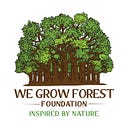NEEM TREE
KNOW A TREE
Neem (Azadirachta indica), also known as nim or margosa, is a fast-growing tree and belongs to Meliaceae (Meliaceae), valued as a source of organic pesticides, medicinal plants, and for the timber purpose also. Neem is probably a native to the Indian subcontinent and to dry areas throughout South Asia. It has been introduced to Africa, the Caribbean, and various South and Central American counties. The plant has long been utilised in Ayurvedic and folk medicine and is applied in cosmetics and organic farming applications.
Description About the Tree
Neem trees can reach 15–30 metres (49–98 feet) tall and have thick furrowed bark and attractive rounded crowns. Toothed leaflets can be seen in the compound leaves and are typically evergreen but do drop during times of utmost drought. The tiny fragrant white flowers are bisexual or staminate (male) and are borne in clusters within the axils of the leaves. The fruit may be a smooth yellow-green drupe and features a sweet-flavoured pulp.
Neem is typically grown from seed but is often generated from cuttings or root suckers. The plant is resilient and hardy and grows well in poor, rocky soils. Neem tolerates a good sort of environmental conditions but cannot survive freezing temperatures or being waterlogged.
Uses of Neem
Nearly all parts of the neem are useful, and lots of its medicinal and cosmetic uses are supported by its antibacterial and antifungal properties. For instance, neem is usually utilised in shampoos for treating dandruff and in soaps or creams for skin conditions like acne, psoriasis, and athlete’s foot. It’s also a component in toothpaste and mouthwashes, especially within the Indian subcontinent. Also, the young twigs are used directly as crude toothbrushes in rural areas. Additionally, neem leaves have long been used as a standard treatment for diabetes, and there’s some clinical evidence suggesting that it’s going to help control blood glucose levels.
Oil extracted from the seeds are often used directly as an insect and mite repellent, insecticide, and fungicide. This active insecticidal ingredient helps for insect molting, preventing larvae from developing properly into adults, and maybe a feeding inhibitor. Neem oil can kill soft-bodied insects on contact and reduces mating and reproductive behaviours, reducing pest fecundity.
As a fungicide, neem oil controls rust, plant disease, mildew, scab, anthracnose, and blight. As long as neem oil breaks down quickly with exposure to ultraviolet, repeated applications are often necessary.
The flower helps in reducing bile, controlling phlegm, and treating intestinal worms. The fruit is used to treat haemorrhoids, intestinal worms, tract disorders, bloody nose, phlegm, eye disorders, diabetes, wounds, and leprosy.
Cake — “Cake” refers to the pulpy substance leftover after oil is extracted from the seeds. It’s an efficient fertiliser and mulch, often use to discourage diseases like mildew and rust. Additionally, it’s sometimes used as livestock fodder.
Leaves — In paste form, neem leaves are used as a skin treatment, primarily for fungus, warts, or chickenpox. Neem is a medicinal tree. The leaves, seeds and barks are used to make medicine. Rarely flower and fruit also are used.
Neem twigs are used to treat cough, asthma, haemorrhoids, intestinal worms, low sperm levels, urinary disorders, and diabetes.Some people apply neem to the skin to treat head lice, skin diseases, wounds, skin ulcers, etc.
The bark is used to treat malaria, intestinal ulcers, skin diseases, stomach pain, and fever.
Neem Tree and Environment
Neem trees act as very efficient, natural air filters trapping dust particles, absorbing gaseous pollutants. The planting of Neem trees helps reduce greenhouse gases through photosynthesis absorbing large quantities of carbon dioxide and producing oxygen.
The Neem Tree can be considered a boon tree to humankind. The benefits and use of the Neem trees are recognised and appreciated worldwide.
To know more about We Grow Forest Foundation please visit our website https://wegrowforest.org/ or contact us at on 9778411911 or email at us plant@wegrowforest.org
